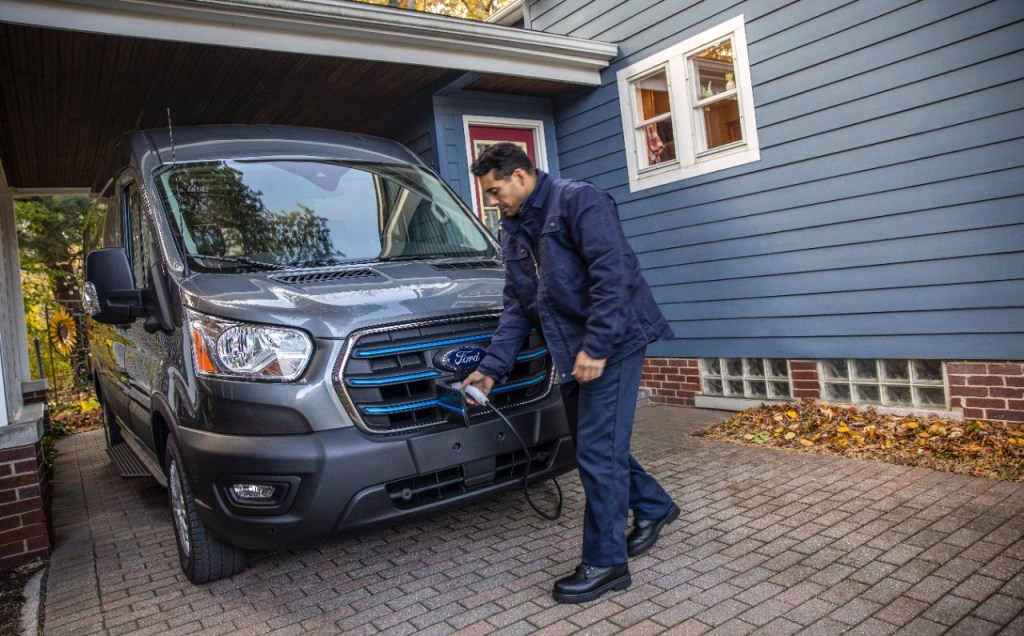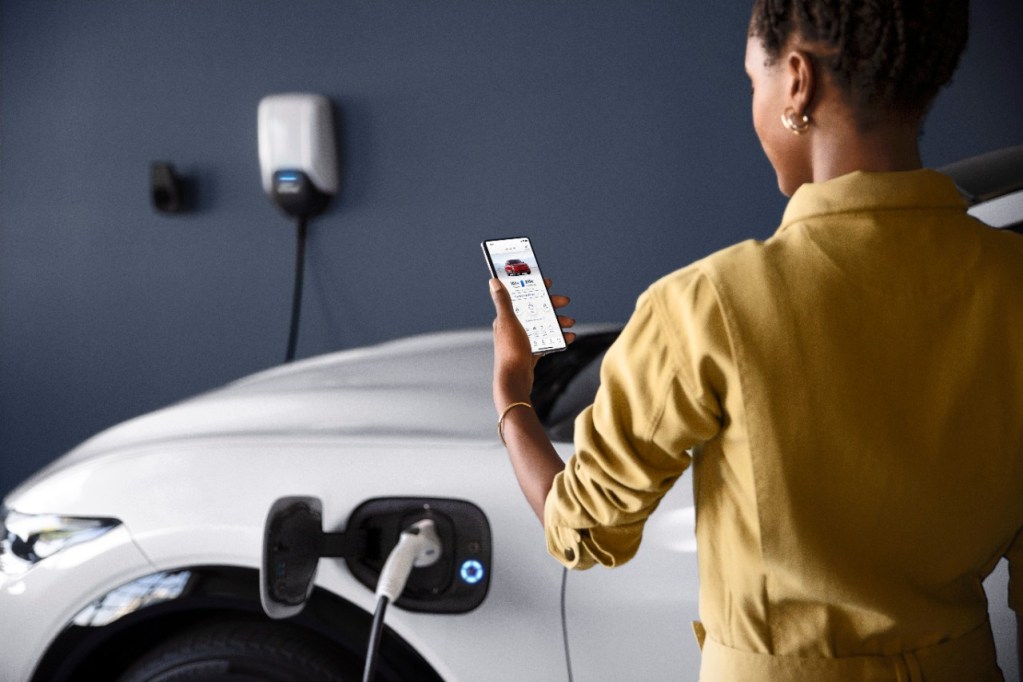You can charge your all-electric or plug-in hybrid vehicle in three ways. Depending on the charging level you choose, your options vary. If you plan to charge at home, you can use a Level 1 or Level 2 charge. If you want a full battery charge in minutes, you need a Level 3 charging station, which is currently not applicable to at-home charging stations.
Whatever EV you own, there are different solutions available. Brands like Ford and Tesla have networks, stations, and adapters for home use. Some charging levels allow you to plug right into the wall; others require you to set up a full station with potential rewiring and professional electrical work. Read on for your essential guide to using an EV charging station at your home.
What are the charging levels for an EV charging station?
There are three charging levels, as mentioned above. Level 3 is currently not usable in the home, so let’s look at what Level 1 and Level 2 offer you for home use.
Level 1 at-home charging
Level 1 charging uses a standard 120-volt household outlet. Make sure you have the right plug and connector for your vehicle, as these vary by manufacturer. Tesla, Nissan, and Ford all use unique electric vehicle supply equipment. Check your owner’s manual or manufacturer’s website if you’re not sure about how to charge.
Level 1 is the slowest way to charge an electric vehicle, adding three to five miles of driving range per hour. This isn’t even an ideal solution for overnight charging. It’s better for plug-in hybrid electric vehicles because of their smaller batteries and subsequent need for a lesser charge.
All-electric vehicles have much larger batteries, making Level 1 charging stations too slow for most daily charging. If you commute more than a few miles to work daily, this won’t last you for very long. If you’ve got a long daily commute, you’ll need a higher charging level.
Whichever EV or PHEV brand you purchase should include basic ESVE necessities, like a safety and warning guide, cable, and adaptor (if needed). Some manufacturers may include adaptors for higher charge levels or to enable on-the-go public charging at unofficial stations.
Level 2 at-home charging
For daily EV charging, you need a Level 2 charging station. This level of ESVE is easy to install at home. Most EV owners install Level 2 chargers for home use, although some use them at the workplace. On average, Lever 2 chargers are 10 times faster than Level 1 charging. You can get a full overnight charge with this electric vehicle charging level.
Most Level 2 chargers range from 208 to 240 volts, generating 80 to 100 amps. Unlike Level 1 ESVEs, you need more than a regular outlet. Higher voltages require a dedicated circuit and a supply line from the breaker box.
Since Level 1 chargers are free (aside from your mortgage or utilities), Level 2 chargers cost extra, ranging from $250 to $1,000. If you have a modern home, you may not need to pay for extra installation. If your wiring is unique or outdated, you may need to hire a pro, which could cost you anywhere from $200 to $1,000 or much higher. On the bright side, you might qualify for a tax credit if you need this type of electrical work completed.

Your guide to charging your EV at home
If you’re still not sure about charging your EV at home, read the following simple steps. You’ll be ready to rev up and go as easy as 1, 2, 3, if you follow these steps.
1. Get a Level 2 charger
If you already own an EV or PHEV and never purchased a Level 2 ESVE, it’s time to get one. You might have gotten by with a slow trickle charge for now, but as soon as you invest in a Level 2 charger, you’ll notice a huge difference.
Check which ESVEs are compatible with your vehicle’s make and model. Some manufactures offer Level 2 charging stations for purchase, others don’t. If you haven’t bought an EV yet and you’re looking at various packages, get one with a Level 2 charger included.
2. Plug in your car
It may seem like common sense, but remembering to plug in your EV may prove challenging at first. The last thing you want is to forget to charge it, rush out the door for work, and discover your wheels are dead.
Make plugging in your car part of your daily routine. When you get home from work, plug it in. Set a reminder on your phone before you go to bed. Whatever it takes to build that routine, do it.
3. Start each day full charged
Don’t run your battery down without charging it up. Just like conventional gas vehicles, running on empty isn’t ideal for the optimal performance of any vehicle. Using the right ESVE and a charging routine means you’ll start each day with your vehicle fully charged.

Still not convinced? Why you need an EV charging station home
The convenience and affordability should convince you to get an EV charging station for your home. If not, consider the cost of charging at public stations. Plus, you can’t put a price on the ease of plugging in on long trips with a portable Level 2 ESVE. No more worrying about where you’ll charge up on even those longer, more isolated road trips.


